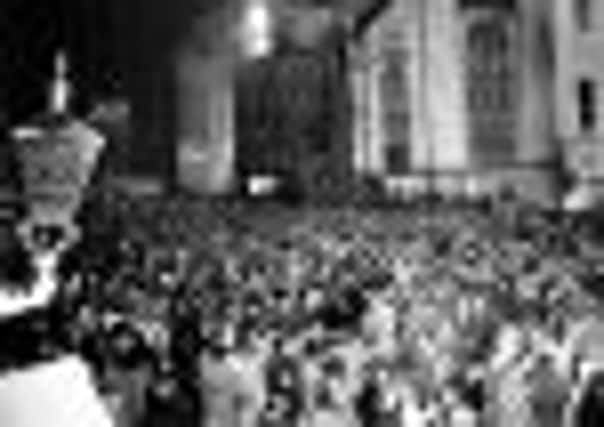Nostalgia: Seeing in the New Year with Old Town style


However, for locals of a certain age another venue may be considered the focal point of New Year’s Eve.
The Tron Kirk, on the Royal Mile, was the traditional gathering place of Hogmanay well-wishers until organised city centre events on Princes Street were introduced in 1993.
Advertisement
Hide AdAdvertisement
Hide AdPictured here, in 1971, were an impressive crowd of thousands of party-goers gathered at the landmark to bring in the the New Year.


One resident who attended in 1969 was Wendy Wood, who at the time said it was “the best” she could remember – although she did acknowledge a new trend in alcohol consumption that year.
‘The one thing they have lost in the way of tradition is that they start drinking at 11pm and by midnight they are past enjoying themselves,” she said.
That trend was bolstered by the rise of the neighbourhood off-licence and supermarkets that made alcohol readily available and established the “carry oot”.
Stocking up the cupboards with alcohol for the festive period is a tradition, of course, many of us still follow today. The fear of a dry New Year jolts Hogmanay party-goers into acquiring copious amounts of alcohol to last the season. In the past, the public faced a significant festive retail shutdown, so the queues of people that assembled outside off- licences and grocers could be justified.


On New Year’s Eve 1965, as pictured here, price cuts to alcohol sent drink sales soaring in Edinburgh. With fierce competition between small licensed grocers and supermarkets, shoppers were buying up all the cheap booze they could.
The shops began selling drink to the public at wholesale prices, which enabled one store to increase the value of its liquor turnover from £25 a week to a staggering £4000 a day. Continued demand for alcohol into the next decade set new record sales. During the 1971 festive period, one off- licence recorded a 500 per cent increase in liquor sales on the year before.
The top sellers of the time were whisky and beer. Shop keepers also noticed an increase in demand for gin, vodka and other spirits, as well as wine. By 1978, the popularity of imported wine and Champagne meant that wine merchants were targets for last-minute shoppers eager to add a bit bubbly to their New Year celebrations.